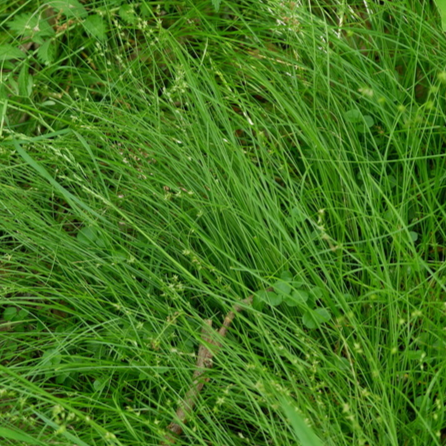Eastern star sedge
Carex radiata
Carex radiata
Couldn't load pickup availability
Sun/shade: Part to full shade
Soil moisture: Medium to wet
Height: 1'
Flowering period:
Deer resistance: High
A very fine-textured sedge, eastern star sedge grows in dense bunches of narrow, grass-like foliage. In late spring, tiny, star-shaped seedheads intermingle with the plant’s leaves and stems. Primarily a woodland plant, eastern star sedge may also be found growing along the shaded edges of ponds and wetlands. In the garden, this sedge should be planted under partial to full shade and in soil of moderate to moderately wet moisture. During summer dry spells, this sedge will likely need to be watered.
Eastern star sedge makes a nice addition to shady garden settings, and it can be utilized in rain gardens and other wet areas. Planted between clusters of forb species, it helps create an attractive, fine-textured matrix to complement its neighbors’ showy flowers and broad leaves. Eastern star sedge remains at least partially evergreen throughout the winter, reminding us of the garden’s latent life. After the sedge’s spring flush of growth, its foliage tends to flatten, and gardeners may want to trim it at this time to give it a perkier look. Later in the year, this cool season plant will be rejuvenated with additional growth.
Over successive growing seasons, eastern star-sedge’s tussocks may begin to hollow out near their center. Dividing the plant will reinvigorate it, returning it to a fuller appearance. With regards to spreading, eastern star-sedge is only weakly rhizomatous, relying on re-seeding in ideal conditions as its primary means of propagating. This is not an aggressive plant, and it will not overtake its neighbors.
Like other woodland sedges, eastern star-sedge produces seed that is consumed by a variety of birds, including sparrows, towhees, cardinals, and juncos. The stems and foliage of woodland sedges provide food for a number of insects, including the caterpillars of several species of grass-miner moths. The grass miner moths are fairy-like little fliers, with filamentous edges to their wings, giving them a distinctly feathered look.
Photo © Bonnie Semmling, CC BY 4.0

